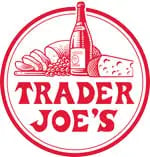When you think about the world’s coolest companies, they all have one thing in common: a kickass company culture.

But how do you define a great culture? I’d argue that you can measure it by how motivated employees are. But motivation isn’t as straightforward as it seems — and it’s not about paying high salaries.
Motivation isn’t just a touchy-feely thing that benefits employees. In fact, improving motivation can increase gross profits by 47%, according to a study in the Harvard Business Review.
The HBR gave an example of banks that sent its managers to a leadership training course. Post training, they saw credit card sales increase by 20% and personal loan sales increase by 47%.
Good leaders = good culture, which impacts employee motivation. And employee motivation always impacts profits.
Here are the key findings on company culture. They’re listed in order of importance:
The HBR also looked at types of employee motivation
The first three motivators comprise the best objective reasons to work — the ones that make people the most motivated, proactive, resilient, and productive. Here’s the breakdown.
The Good
Play:
Play happens when you’re motivated by the work you’re doing. You enojy it, so it doesn’t feel like “work.” It feels like a creative process with a meaningful goal in mind.
Purpose:
Purpose happens when your work feeds a critical part of your identity. For example, the environmental lawyer who is driven by a deep appreciation of and desire to protect nature has a sense of purpose.
Potential:
Potential happens when the work you do adds to your own personal possibilities. This means that doing a good job could help you get to a desired next phase.
The Bad
Emotional Pressure:
This is when you work because something external threatens your identity — like when you do something to avoid disappointing others or yourself. Fear, peer pressure, and shame are all types of emotional pressure that can be inflicted by someone else or yourself. The problem with this motivation is that your reasons for working are disconnected from the work itself.
Economic Pressure:
This happens when the promise of compensation makes you work. Again, here the motivation is far removed from the actual work and your own identity.
Inertia:
This last motivation is the worst. You’re on autopilot. Your only reason for doing something is the fact that you did it the day before. You’re still doing the work, but the reasons are disconnected from anything in the present moment.
Not all motivators are equal
Teresa Amabile, Professor of Business Administration and Director of Research at the Harvard Business School, studied the importance of different motivators.
She gathered a group of poets and split them into two groups. She had group one read a list of motivations for being a poet that fit into the “play” category.
The reasons included, “you enjoy the opportunity for self-expression” and “you like to play with words,” among others. Then she told group two to read a list of motivations in the emotional and economic pressure category such as, “you want your writing teachers to be favorably impressed with your writing talent” or “you have heard of cases where one bestselling novel or collection of poems has made the author financially secure.”
Then she told both groups to write poems. At the end of the experiment, the poets who read the list of “play” motivations beforehand ended up with poems that were 26% more creative.

The difference between Delta and Southwest
In another experiment, the HBR compared customer satisfaction to employee motivation. They looked at the airline industry and found that higher employee motivation correlated to significantly higher customer satisfaction.
In the test, Southwest was on the high end of both spectrums with a score of 38 for employee motivation (on a scale of -100 to 100) and a 78 in customer satisfaction (on a scale of 0 to 100). Delta, which scored a low 22 employee motivation rating also had a lower customer satisfaction rating of 60.
 The same findings occurred at grocery stores. Trader Joe’s, which is known for its fun culture and employee perks, had the highest employee motivation factor (27) and the highest customer satisfaction rating (85). But Albertsons, which functions as a run-of-the-mill grocery store with weaker company culture and identity, had the lowest in both employee motivation (4) and customer satisfaction (74).
The same findings occurred at grocery stores. Trader Joe’s, which is known for its fun culture and employee perks, had the highest employee motivation factor (27) and the highest customer satisfaction rating (85). But Albertsons, which functions as a run-of-the-mill grocery store with weaker company culture and identity, had the lowest in both employee motivation (4) and customer satisfaction (74).
A quick look on Glassdoor.com also revealed that while 75% of Trader Joe’s employees would recommend their company to a friend, the number was 55% for Albertsons.
The numbers bear out across industries, HBR reported — company cultures that inspire more play, purpose, and potential instead of emotional pressure, economic pressure, and inertia had more customer satisfaction.
What some companies do to increase the good kinds of motivation
Southwest makes employees’ roles feel more fun and laidback by encouraging them to think of themselves as part-time comics, using humor and play in their interactions with customers. That’s why they do things like turning flight safety instructions into comedy sketches.
Microsoft has a project called “The Garage” where employees are given time and resources to devote to their own projects. By doing that, employees are allowed to model their own role in the company and experiment with their identity — for example, a middle manager can test their abilities as an entrepreneur.
Medtronic, a medical device company, lets engineers see the products they make in action. This boosts employees’ sense of purpose and the company’s identity as a business that helps people. An exec at biopharmaceutical company UCB did the same thing by inviting patients to executive meetings.
Ideas for improving motivation:
Weekly team huddles: Have a weekly team meeting where people can get motivated by answering the following:
- What they learned this week. (encourages play)
- What impact they had this week. (purpose)
- What they want to learn next week. (potential)
Explain the why: When talking about a new project or strategy, let everyone in on why things are happening. This will avoid situations where people slip into the “because she told me to do it,” emotional pressure kind of motivation.
Take another look at roles: Ask yourself if people have enough wiggle room within their roles to use their unique talents and step outside their comfort zones. Think about areas where people can experiment freely and encourage them to do so. It’s also good to ask people where they want to be in two to five years and help them come up with a plan to reach their potential.
The Takeaway: people want a tribe
Humans are pack animals. We’ve been living in groups since forever. As I see it, culture is about creating a tribe that people want to be a part of, one that recognizes that people need a common cause — and while money is important, it’s not the most important thing.
If you need some inspiration, think about a group (maybe it’s a football team or a group of friends or an alumi network) that you’re thrilled to be a part of, even when times are tough. Clearly they’re doing something right.